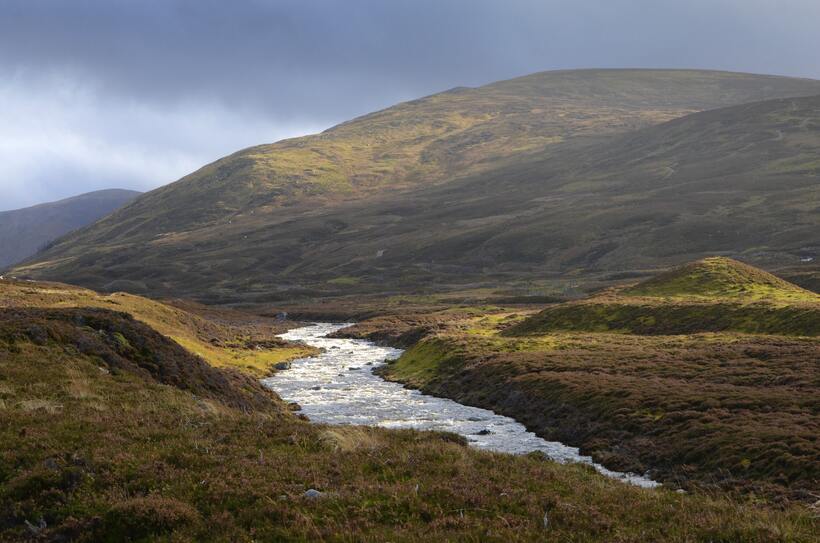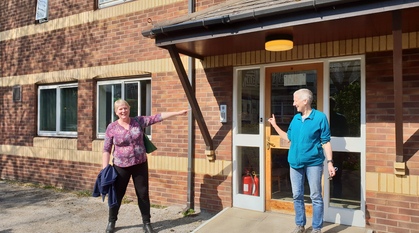Land reform in Scotland
Andrew Tomlinson looks at land use and ownership in Scotland and whether new proposals will lead to fair and sustainable land reform.

Last year the Scottish government consulted on a Land Reform Bill it hopes will "increase diversity of landownership", "bring about changes in land use" and "create more opportunities for communities to engage in decision-making".
These are all positive aspirations, but many people – myself included – feel that the bill's proposals will fall short of these aims. In this blog I'll give some background to land reform in Scotland before considering the proposed bill and how it could be improved.
Enclosure and clearances: the roots of Scotland's land issues
Scotland has one of the most concentrated patterns of land ownership in the world. An estimated 432 families own half of all private land in Scotland, and just over 1,200 landowners hold two-thirds of Scottish land.
Many land issues in Scotland go back to the 18th and early 19th centuries. The enclosures and Highland Clearances saw landlords take control of common land, forcibly evicting tenant farmers to make space for more profitable businesses. Some estimates suggest that around 70,000 people were evicted over the course of 100 years.
This drastically changed the social landscape of rural Scotland, particularly the Highlands, where many areas still have lower populations today than they did before this period of mass displacement.
Devolution and land reform
Land reform has been a key issue in Scottish politics since 1997, when the newly elected UK government established a Land Reform Policy Group and began the process of devolution. Successive legislation has:
- ended feudal tenure and simplified titles to land
- created a legal framework for land access, including the 'right to roam'
- established the 'community right to buy' from existing landowners, and expanded it to urban communities
- enabled Scottish ministers to compel owners of abandoned or neglected land to sell it to interested community bodies
- enabled Scottish ministers to force the sale of private land to community bodies to further sustainable development.
Despite these positive changes, inequalities persist. Scotland's land ownership pattern remains highly concentrated and often opaque. And as Scotland tackles climate change, land use will play an ever-larger part in Scotland's greenhouse gas emissions. This adds a new dimension to the question of who owns Scottish land and how it is managed, which is where the new Land Reform Bill comes in.
The new bill
The proposals for the Land Reform Bill are based on recommendations made by the Scottish Land Commission. These focus on large-scale landholdings and include:
- requiring large landholdings to produce a land management plan, and to notify an intention to sell
- strengthening the Land Rights and Responsibilities Statement (LRRS) by making compliance a legal duty rather than a voluntary scheme
- introducing a public interest test when large landholdings change hands.
In turn, these proposals are intended to achieve the "core aims" of the Scottish government land reform policy, which I quoted at the start of this blog.
But this is where the problems lie. While the aims at the heart of these proposals are praiseworthy, it is unlikely they will be achieved. There are three aspects to transforming highly concentrated patterns of land ownership:
- the land tenure system (the rules around how land is owned, controlled and transferred)
- the fiscal framework surrounding land ownership (how land is taxed or how certain land uses are subsidised)
- the administrative law around managing land (governing how land is used).
The proposals seem to focus on introducing more accountability and transparency to the land market rather than enacting structural reform in these areas. And it's striking that there are no proposals to reform land taxation or the law of succession (the right to inherit land).
Though contentious, these are the two measures that have been proven historically to dismantle concentrated patterns of landownership. In fact, in 2021 the Scottish Land Commission itself said the proposed measures "will not, on their own, deliver the longer-term systemic change in patterns of land ownership that are required to realise the full benefits of Scotland's land resource."
What we are saying
To truly address the challenges identified in the consultation, we need policies that will encourage people to care for their environment, and to realise that their own well-being depends on it.
Reforming land taxation could encourage the sale of land and dismantle concentrated patterns of land ownership. Even a relatively modest tax on land transfers would be both a nudge away from the maintenance or accumulation of large landholdings and a signal that the Scottish government recognises that the land is of great value to the wider community, not just to landowners.
Where land tenure is concerned, this may involve the transfer of land from individuals to communities. And there is an argument to say that such transfers should not be compensated, given the long-term benefits to individuals of the enclosure of what was previously common land.
Similarly, if the Scottish government is serious about boosting community ownership, it needs to play a stronger role in overseeing land tenure. In many nations, aspiring landowners often have to make binding commitments on intended land use and management – in some cases, land can be repossessed if conditions are breached. And public authorities regularly make use of pre-emptive rights to buy to safeguard the public interest.
Lastly, in terms of land management we would like to see a reframing of our relationship with the environment. The LRRS goes some way towards acknowledging a dynamic relationship between Scotland's land and its people, but it could go further still by recognising the responsibilities we all have to repair and nurture healthy ecosystems that sustain life on earth for future generations.
If we want land reform to be part of a just transition to net zero, there is a strong case for environmental and community bodies being given new rights and powers. The Land Reform Bill could play a significant part in laying the foundations for a more equal and sustainable Scotland. But it would need to be far more ambitious.
Read our response (Word) to the Land Reform Bill consultation and share it with your MSP. You can also sign up to one of the Scottish Land Commission's Land @Lunch webinars.


